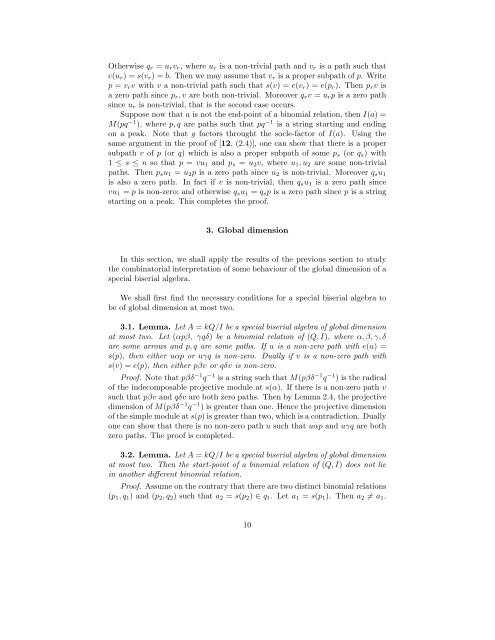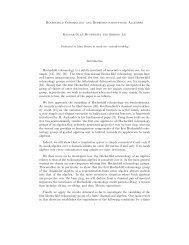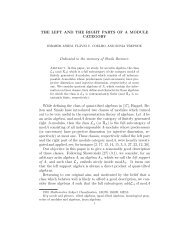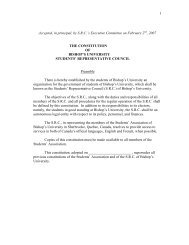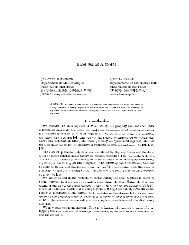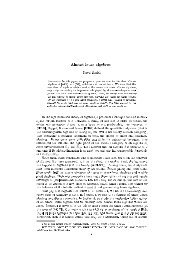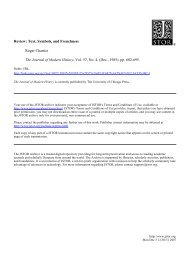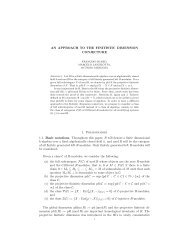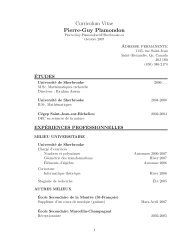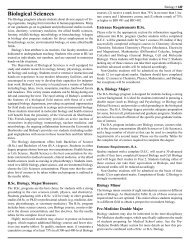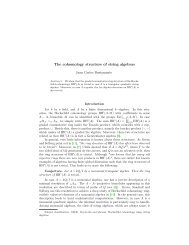Tilted Special Biserial Algberas François Huard and Shiping Liu ...
Tilted Special Biserial Algberas François Huard and Shiping Liu ...
Tilted Special Biserial Algberas François Huard and Shiping Liu ...
Create successful ePaper yourself
Turn your PDF publications into a flip-book with our unique Google optimized e-Paper software.
Otherwise q r = u r v r ,whereu r is a non-trivial path <strong>and</strong> v r is a path such that<br />
e(u r )=s(v r )=b. Then we may assume that v r is a proper subpath of p. Write<br />
p = v r v with v a non-trivial path such that s(v) =e(v r )=e(p r ). Then p r v is<br />
a zero path since p r ,v are both non-trivial. Moreover q r v = u r p is a zero path<br />
since u r is non-trivial, that is the second case occurs.<br />
Suppose now that a is not the end-point of a binomial relation, then I(a) =<br />
M(pq −1 ), where p, q are paths such that pq −1 is a string starting <strong>and</strong> ending<br />
on a peak. Note that g factors throught the socle-factor of I(a). Using the<br />
same argument in the proof of [12, (2.4)], one can show that there is a proper<br />
subpath v of p (or q) which is also a proper subpath of some p s (or q s )with<br />
1 ≤ s ≤ n so that p = vu 1 <strong>and</strong> p s = u 2 v,whereu 1 ,u 2 are some non-trivial<br />
paths. Then p s u 1 = u 2 p is a zero path since u 2 is non-trivial. Moreover q s u 1<br />
is also a zero path. In fact if v is non-trivial, then q s u 1 is a zero path since<br />
vu 1 = p is non-zero; <strong>and</strong> otherwise q s u 1 = q s p is a zero path since p is a string<br />
starting on a peak. This completes the proof.<br />
3. Global dimension<br />
In this section, we shall apply the results of the previous section to study<br />
the combinatorial interpretation of some behaviour of the global dimension of a<br />
special biserial algebra.<br />
We shall first find the necessary conditions for a special biserial algebra to<br />
be of global dimension at most two.<br />
3.1. Lemma. Let A = kQ/I be a special biserial algebra of global dimension<br />
at most two. Let (αpβ, γqδ) be a binomial relation of (Q, I), whereα, β, γ, δ<br />
are some arrows <strong>and</strong> p, q are some paths. If u is a non-zero path with e(u) =<br />
s(p), then either uαp or uγq is non-zero. Dually if v is a non-zero path with<br />
s(v) =e(p), then either pβv or qδv is non-zero.<br />
Proof. Note that pβδ −1 q −1 is a string such that M(pβδ −1 q −1 ) is the radical<br />
of the indecomposable projective module at s(α). If there is a non-zero path v<br />
such that pβv <strong>and</strong> qδv are both zero paths. Then by Lemma 2.4, the projective<br />
dimension of M(pβδ −1 q −1 ) is greater than one. Hence the projective dimension<br />
of the simple module at s(p) is greater than two, which is a contradiction. Dually<br />
one can show that there is no non-zero path u such that uαp <strong>and</strong> uγq are both<br />
zero paths. The proof is completed.<br />
3.2. Lemma. Let A = kQ/I be a special biserial algebra of global dimension<br />
at most two. Then the start-point of a binomial relation of (Q, I) does not lie<br />
in another different binomial relation.<br />
Proof. Assume on the contrary that there are two distinct binomial relations<br />
(p 1 ,q 1 )<strong>and</strong>(p 2 ,q 2 ) such that a 2 = s(p 2 ) ∈ q 1 . Let a 1 = s(p 1 ). Then a 2 ≠ a 1 .<br />
10


